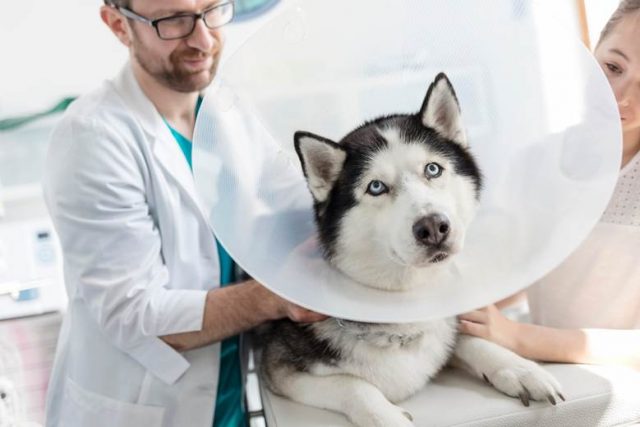Cynthia Maro has long advocated for pet owners to seek care which is customized specifically for their companions. This includes the role that spaying and neutering play in long-term health and well-being of pets.
Surgical altering needs to be evaluated based on breed, species and risk factors associated with keeping pets intact vs proceeding with spaying or neutering.
The question over whether or not altering is best for a pet is not just about controlling the pet population, but rather whether it will improve or detract from the pet’s length and quality of life.
Spaying and neutering can provide numerous health advantages that can significantly extend a pet’s lifespan and improve their quality of life, but recent research has shown that some breeds may have increased risk of cancer development after spaying. Other breeds may fare better with delayed spaying and neutering.
Because of recent research and controversy over when and whether to alter pets, owners sometimes hesitate to schedule what used to be the commonplace 6 month spay surgery.
Though some people may have misconceptions about potential harmful effects from desexing, there are valid pros and cons to consider. The ultimate decision should be based on the veterinary science available on the matter.
Cynthia Maro on How Spaying and Neutering Contribute to Disease Prevention
The most significant health benefits of spaying and neutering is the prevention of sex hormone driven health disorders, including pyometra, mammary and testicular tumors, as well as tumors of the perirectal region. Unspayed female pets are at a much higher risk of developing infections such as pyometra, a severe uterine condition that can lead to death if not treated promptly. By removing the reproductive organs, this risk is entirely eliminated, allowing pets to avoid the complications associated with reproductive infections. Additionally, spaying significantly reduces the chances of mammary gland tumors, which are malignant in approximately half of female dogs and the vast majority of female cats.
Male pets that remain intact face their own set of health risks. Neutering drastically decreases the likelihood of testicular cancer and greatly reduces the risk of prostate diseases, including enlargement and infection.
Many male dogs and cats that are not neutered can develop aggressive tendencies and territorial behaviors, which can lead to injuries from fights or accidents due to wandering. Cynthia Maro has seen firsthand how these medical risks can be minimized simply by ensuring pets are spayed or neutered at an appropriate age.
Cynthia Maro on the Behavioral Benefits of Spaying and Neutering
Beyond the physical health benefits, spaying and neutering also help improve a pet’s behavior, making them easier to manage and more pleasant companions. Female pets that are not spayed will go into heat cycles, which can cause excessive vocalization, restlessness, and, in some cases, aggressive behaviors. This can be stressful not only for the pet but also for the owner, as heat cycles often result in frequent attempts to escape or attract mates, increasing the risk of unwanted litters.
Male pets that are neutered are far less likely to engage in territorial marking, roaming, and aggressive interactions with other animals. The hormonal drive to seek out mates can cause male dogs and cats to exhibit destructive behaviors or attempt to escape their homes, leading to dangerous encounters with traffic or other animals. Cynthia Maro has worked with numerous pet owners who have found that spaying and neutering create a calmer and more content pet, reducing unwanted behaviors and fostering a more stable household environment.
Cynthia Maro on the Connection Between Spaying, Neutering, and Lifespan
There had been a longtime connection between spaying, neutering, and an extended lifespan for pets.
Studies previously have shown that spayed female dogs and cats live longer than their unspayed counterparts, primarily due to the reduced risks of cancer and infections. Likewise, neutered male cats and dogs are less likely to engage in dangerous behaviors that could shorten their lives, such as roaming in search of a mate, getting into fights, or being struck by vehicles.
Recent studies have shown that many breeds of dogs benefit from delaying spaying and neutering with improved resistance to cancer development. In some cases, ovary sparing spay or vasectomy in males, may be preferred – the Golden Retriever is an example of a breed with a high cancer risk in which spaying has been correlated with increased cancer rates.
It is best to research and discuss current veterinary recommendations on spaying/neutering with your veterinarian before making a decision about the best timing for the surgery, especially in larger breeds of dog, such as Rottweilers, Wolfhounds and Great Danes.
Other objections to the procedure often stem from concerns about weight gain or changes in energy levels. While it is true that some pets may experience metabolic shifts after being spayed or neutered, these effects can be managed with diet and exercise. Cynthia Maro reassures pet owners that responsible feeding habits and regular physical activity are key to keeping pets healthy post-surgery, ensuring they continue to live active and fulfilling lives.
Cynthia Maro on When and Why Timing Matters
The optimal timing for spaying and neutering depends on the species, breed, and individual health status of the pet. Traditionally, veterinarians have recommended the procedure be performed around six months of age, but recent research has suggested that larger breed dogs may benefit from waiting longer to allow for full development. In female dogs, spaying by 18 months has been associated with a reduced risk of mammary cancers – this guidance varies by breed.
In shelters and rescue organizations, early-age spaying and neutering are often performed to prevent overpopulation. Dr. Maro and other integrative veterinarians c have raised concerns regarding the long-term impact of early sterilization for the health of the individual pet.
The shelters have focused on benefits in terms of population control and preventing euthanasia of unwanted pets making this approach a widely accepted shelter medicine practice.
Cynthia Maro advises pet owners to discuss the best timing for their individual pet with a trusted veterinarian, taking into account breed-specific considerations and overall health.
Cynthia Maro on Addressing Common Misconceptions About Spaying and Neutering
Many pet owners hesitate to have their pets spayed or neutered due to misconceptions, such as concern that their pet’s personality will change dramatically after the procedure, but spaying and neutering primarily impact hormone-driven behaviors, not a pet’s fundamental temperament.
Another concern often expressed is the belief that neutering will make male pets less protective. While testosterone plays a role in territorial behaviors, a neutered dog is still fully capable of being a loyal and protective companion. Cynthia Maro emphasizes that personality is shaped by genetics, training, and environment rather than reproductive hormones, meaning that a pet’s essential traits will remain intact post-surgery, provided the pet is not in heat or post-heat diestrus phase at the time of the surgery.
Cynthia Maro on the Role of Responsible Pet Ownership
Essential components of responsible pet ownership include population control, and preventing pets from roaming – if these 2 items are addressed, then spaying and neutering should be timed to benefit the individuals’ health risks.
Beyond the immediate health benefits, the procedure plays a crucial role in reducing the number of homeless animals that end up in shelters. Each year, millions of dogs and cats are surrendered or abandoned, many of whom are euthanized due to overcrowding. Preventing unplanned litters directly contributes to lowering these numbers, ensuring that existing pets have the opportunity to find loving and permanent homes.
Pet owners who take the step to spay or neuter their animals are not only making a decision for their pet’s health but also helping improve the overall welfare of the pet community. By reducing unwanted litters, fewer animals face neglect, suffering, and homelessness. Cynthia Maro consistently encourages pet owners to recognize that either surgical altering or ovary-sparing spay/vasectomy procedures can have widespread positive impact that extends beyond their own household.
Cynthia Maro on the Lasting Impact of Spaying and Neutering
Cynthia Maro firmly believes that understanding the long-term benefits and risks of spaying and neutering empowers pet owners to make the best decisions for their animals. With a reduced risk of life-threatening diseases, improved behavior, and knowledge of breed specific timing, owners can make better informed decisions. Ensuring pets receive properly timed veterinary care, including this surgical decision, lays the foundation for a healthier, happier life.
Author
Dr. Cynthia Maro – Integrative Veterinarian, Cynthia Maro, DVM, CVA, CAC, VMRT, VNAET









